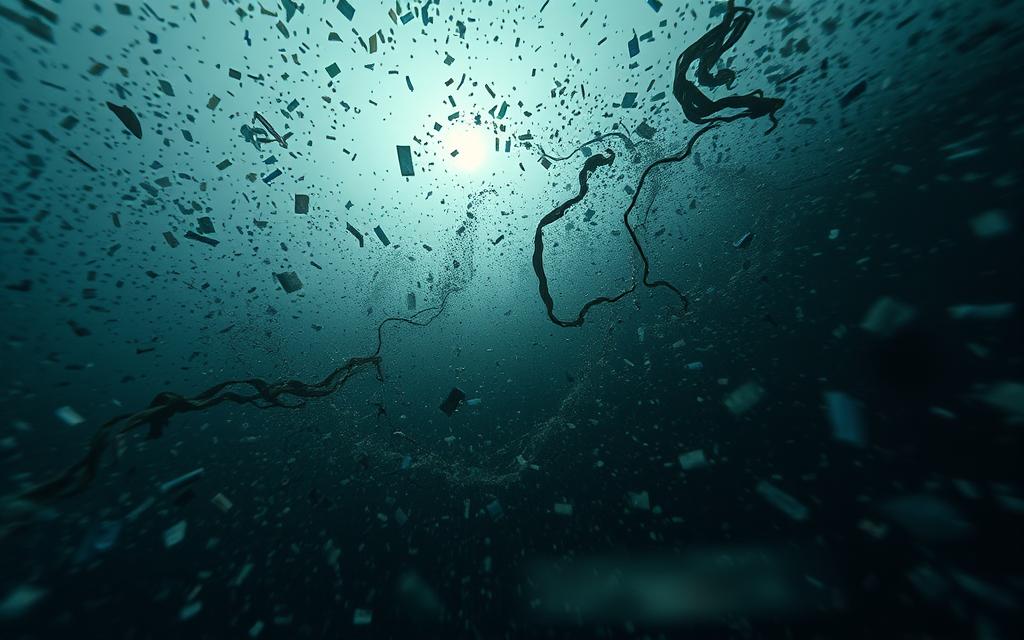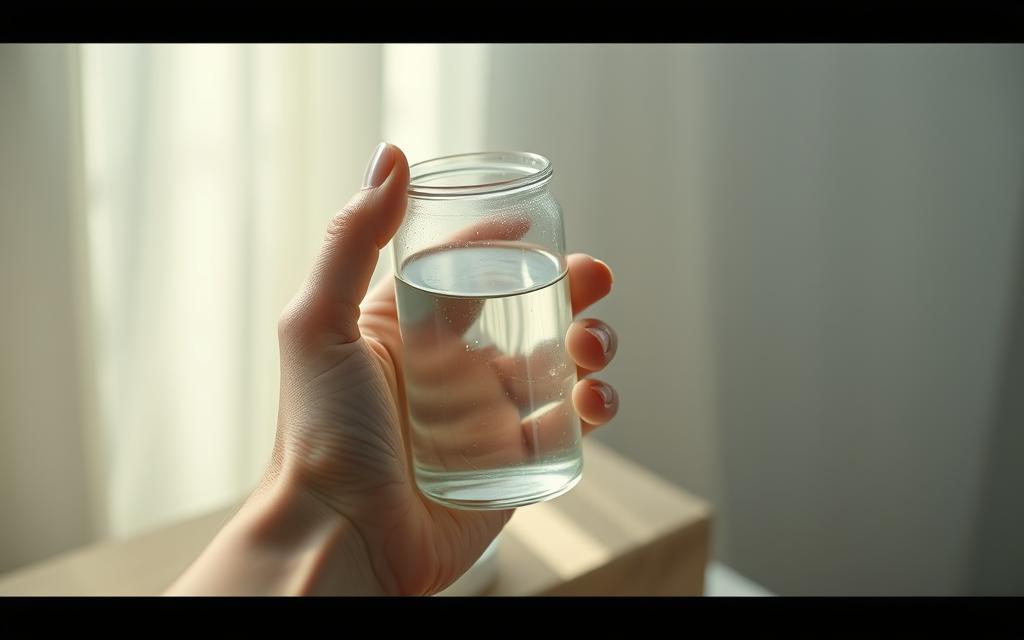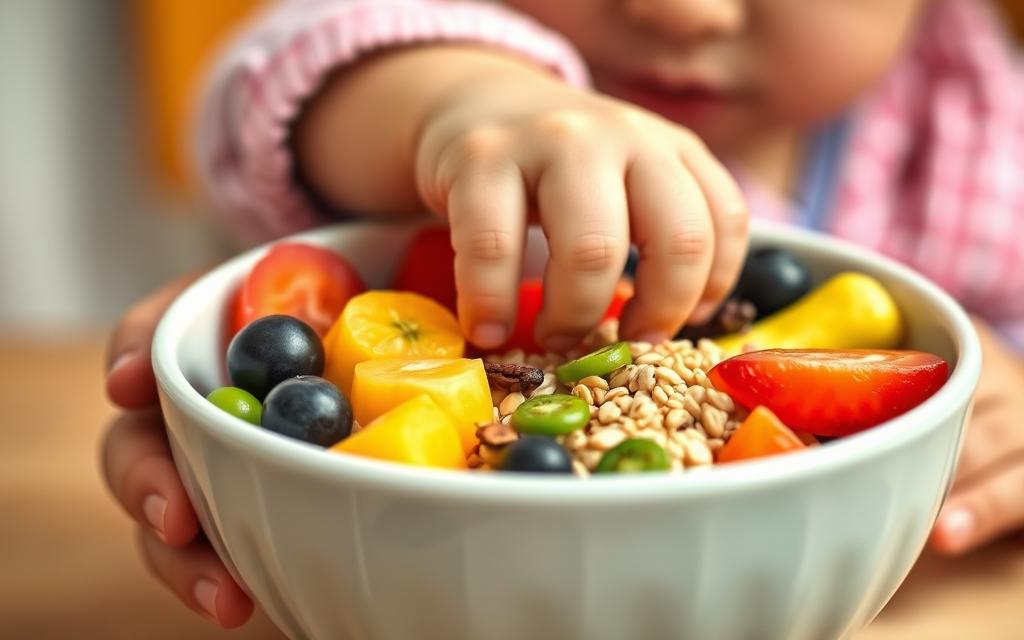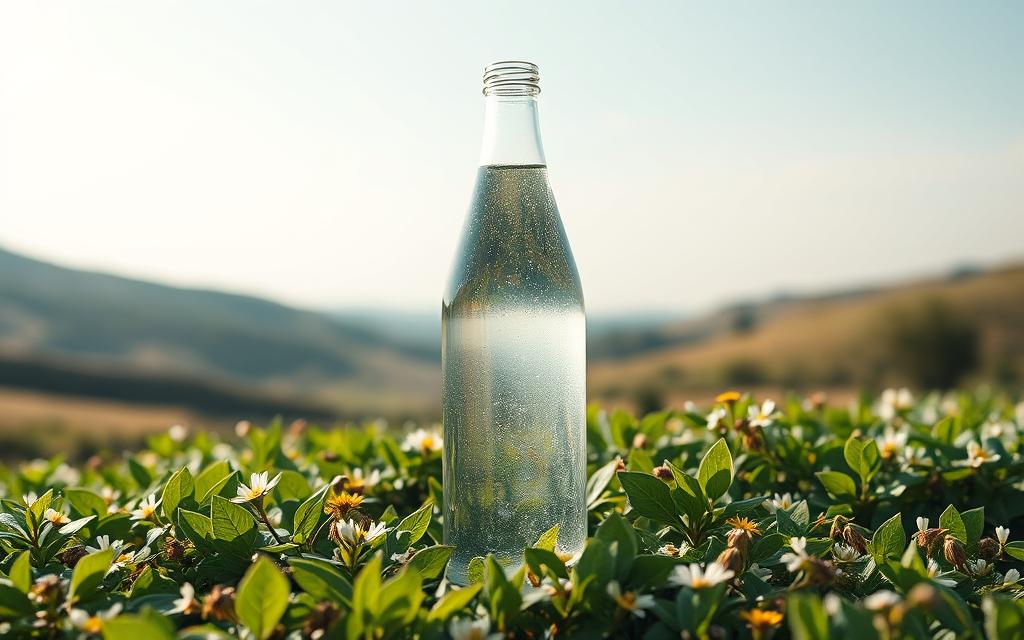How to Avoid Microplastics and Reduce Exposure
Microplastics are everywhere, in your food and clothes. They harm our health. You might wonder: Can you really avoid them?
To avoid microplastics, you need to know where they come from. Then, you can take steps to stay away from them. By changing a few things in your daily life, you can cut down on these tiny plastics.
It’s important to learn how to avoid microplastics for a healthier life. It’s not hard. In this article, we’ll show you the top 5 ways to lower your exposure.
Avoiding Microplastics Exposure Takeaways
- Understand the sources of microplastics
- Implement simple changes to reduce exposure
- Make informed choices about food and clothing
- Use alternatives to plastic products
- Adopt habits to minimize microplastic pollution
The Hidden Danger: Understanding Microplastics and Their Impact
Microplastics in our environment are not just bad for nature. They also harm our health. You might wonder what microplastics are and how they affect us. Knowing where they come from and how they impact us is key to fighting their harm.
What Are Microplastics and Where Do They Come From?
Microplastics are tiny pieces of plastic. They come from big plastic pieces breaking down and from microbeads in face wash. These small pieces are everywhere, in water, air, and even in us.
Using face wash with microbeads or drinking water with microplastics can expose you. They come from many places, like clothes washing and plastic bag breakdown.
The Harmful Effects of Microplastic Exposure on Human Health
Being around microplastics can cause health problems. They can get into your blood and cause harm. Studies show they can block or poison you and mess with your body’s chemicals.
To avoid microplastics, we need to change how we live and what we use. Knowing about microplastics and their effects is the first step. This helps us reduce our exposure and fight pollution.
Why Microplastics Are Everywhere: From Ocean to Table
Microplastics travel through the environment in many ways. They can come from litter, industrial processes, and breaking down of big plastics. This means they can end up in our food and water systems.
The Journey of Plastic Particles Through Our Environment
Microplastics can go far through the environment. They move by wind, water, and animals. This makes soil, water, and air dirty.
The Pathways of Microplastic Pollution
| Pathway | Description | Impact |
|---|---|---|
| Water Pollution | Microplastics enter rivers and oceans through wastewater and litter. | Contaminates aquatic life and water sources. |
| Air Pollution | Microplastics are carried by wind, depositing in various locations. | Affects soil and water quality, potentially being inhaled. |
| Soil Pollution | Microplastics settle in soil, affecting its quality and potentially being ingested by organisms. | Impacts soil health and potentially enters the food chain through crops. |
Microplastics in the Food Chain and Water Systems
Microplastics in the food chain worry us a lot. When marine life eats them, we might eat them too through seafood. Also, microplastics are found in many foods and drinking water.
Reducing exposure to microplastics requires understanding their journey through the environment and into our food and water.
How to Avoid Microplastics: Your 5-Step Action Plan
Start by knowing how much plastic you use every day. Make a plan to cut down on plastic. This plan should help you track your progress.
Understanding Your Personal Plastic Footprint
First, track your daily plastic use. Use a journal or app to log it. This will show you where to cut down on plastic.
| Daily Habits | Plastic Use | Alternatives |
|---|---|---|
| Drinking Water | Plastic Bottles | Reusable Stainless Steel Bottles |
| Personal Care | Microbead-containing Products | Natural Exfoliating Products |
| Food Storage | Plastic Containers | Glass or Ceramic Containers |
Creating a Realistic Microplastic Reduction Strategy
After knowing your plastic use, set goals to use less. Choose items made from glass, ceramic, or stainless steel instead of plastic. Also, stop using products with microbeads and use natural personal care items.
Tracking Your Progress in Reducing Exposure
Keep track of how you’re doing. Look at your log often. This will help you see your progress and stay on track.
Strategy #1: Filtering Your Water to Remove Plastic Particles
Using a water filter is a great way to cut down on plastic in your water. Tap water often has microplastics in it. So, filtering your water is key to lowering your exposure.
Choosing the right water filter is important. Not all filters can catch microplastics. Pick one that is made to remove these tiny plastics.
Best Water Filtration Systems for Microplastic Removal
Look for filters with activated carbon or reverse osmosis. These are good at getting rid of microplastics in your water.
| Filtration Method | Effectiveness Against Microplastics | Maintenance Cost |
|---|---|---|
| Activated Carbon | High | Medium |
| Reverse Osmosis | Very High | High |
| Ultraviolet (UV) Light | Low | Low |
The table shows how different filters work against microplastics. UV light doesn’t do much against plastics. But, it can kill bacteria and other germs.

The Truth About Bottled Water vs. Tap Water
There’s a big debate about bottled water vs. tap water. But, bottled water is not always safer from microplastics. Sometimes, bottled water has more plastics than tap water.
The best thing is to use a reliable water filtration system on your tap water. It’s better for the environment and saves money compared to bottled water.
Strategy #2: Choosing Safer Food Storage Alternatives
One way to avoid microplastics is to change how you store food. The containers you pick can help or harm. Choosing the right ones can lower your chance of eating microplastics.
Glass, Ceramic, and Stainless Steel: Your Plastic-Free Options
Using glass, ceramic, or stainless steel containers is a smart move. They are tough, safe, and don’t scratch easily. They don’t leak chemicals into your food, unlike plastic.
Glass is safe because it doesn’t mix with food. Ceramic is good if it’s made without harmful glazes. Stainless steel is strong and safe for hot foods.
Why Heating Food in Plastic Containers Increases Health Risks
Heating food in plastic can release chemicals like BPA and phthalates. These can mess with your hormones and cause health problems.
Heating food in plastic risks more than just microplastics. It also means you might get harmful chemicals. Glass, ceramic, or stainless steel keeps you safe.
Changing how you store food is a big step towards being healthier. It’s about choosing wisely for your health and the planet.
Strategy #3: Selecting Microplastic-Free Personal Care Products
Many personal care items have microplastics. But, choosing natural options can help a lot. Things like face wash and toothpaste often have microbeads. These can hurt the environment and our health.
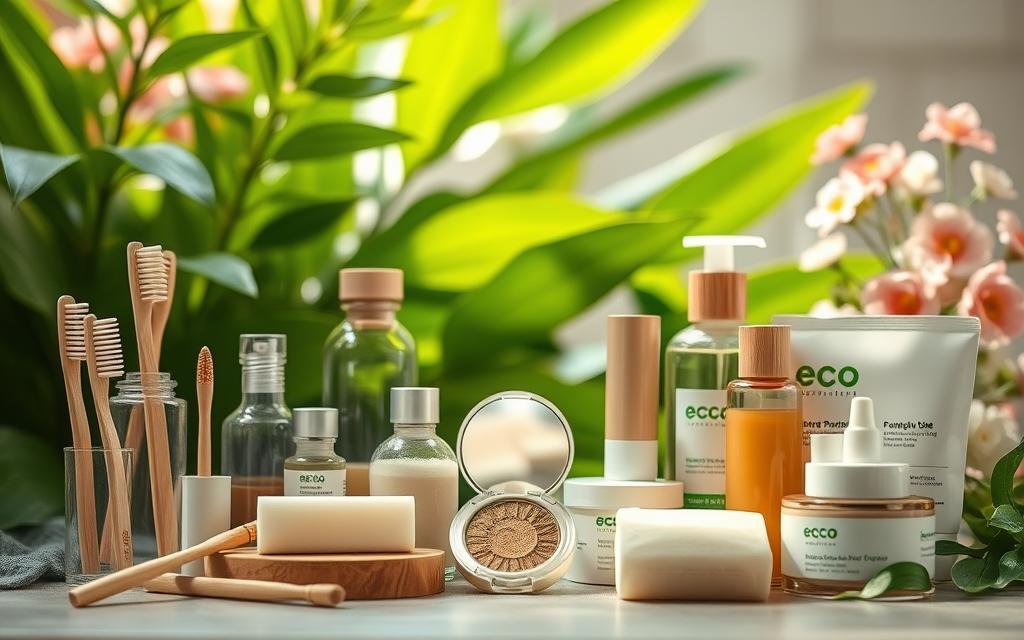
Identifying and Avoiding Microbeads in Cosmetics and Toiletries
Microbeads are tiny plastics in some products for cleaning. They can get into our water and harm oceans. To skip them, look for products without polyethylene or polypropylene. Choose ones with natural cleaners like salt, sugar, or almonds.
Some common products that may contain microbeads include:
- Face wash and scrubs
- Toothpaste
- Exfoliating body washes
- Cosmetic products with glitter
Natural Alternatives to Plastic-Containing Personal Care Items
Many brands now offer products without microplastics. When you shop, find items with natural stuff and stuff that breaks down easily. Here are some examples:
- Toothpaste tablets made with natural ingredients
- Face creams with natural exfoliants
- Soap bars that are free from microplastics
- Exfoliating gloves or konjac sponges as alternatives to microbead-containing scrubs
By picking these options, you help cut down on microplastic pollution. You also keep yourself safe from microplastics.
Strategy #4: Reducing Single-Use Plastic in Your Daily Life
One way to cut down on microplastic is to use less single-use plastic. Making a few simple changes can help a lot. This way, you can reduce plastic waste in your environment and in your body.
Essential Reusable Items That Reduce Microplastic Exposure
Switching to reusable items is easy. It helps a lot in reducing plastic waste. Here are some key items to consider:
- Reusable Bags: Keep cloth bags for grocery shopping and other errands.
- Stainless Steel Water Bottles: Use a refillable stainless steel bottle instead of plastic ones.
- Beeswax Wraps or Cloth Napkins: Use beeswax wraps or cloth napkins for food and cleaning.
- Metal or Bamboo Straws: Choose reusable straws made from metal or bamboo over plastic ones.
| Single-Use Plastic Item | Reusable Alternative | Environmental Impact |
|---|---|---|
| Plastic Bags | Cloth Bags | Reduces plastic waste in landfills and oceans |
| Disposable Water Bottles | Stainless Steel Water Bottles | Decreases plastic bottle waste and conserves resources |
| Plastic Straws | Metal or Bamboo Straws | Minimizes plastic straw pollution in waterways |
Creating New Habits to Minimize Disposable Plastic Usage
To really make a difference, you need to change your habits. Start by looking at where you can make changes. For example:
- Refusing single-use plastics like plastic cutlery or straws.
- Reusing items like a reusable coffee filter.
- Recycling as much as you can, including plastics, paper, and glass.
By doing these things every day, you’ll not only cut down on microplastic. You’ll also help make the world a more sustainable place.
Strategy #5: Choosing Natural Fiber Clothing and Textiles
Your clothes can help or hurt the environment. By picking the right fabrics, you can help the planet. This choice supports better fashion and less microplastic pollution.
How Synthetic Fabrics Shed Microplastics During Washing
Clothes made from polyester, nylon, and acrylic shed tiny plastic fibers when washed. These tiny plastics can get into our water, harming fish and our drinking water. A single wash can release thousands of these tiny plastics.
It’s key to know how synthetic fabrics pollute. Washing these clothes breaks them down, releasing tiny plastics. These plastics are too small for filters, so they go into our rivers and oceans.
Cotton, Wool, and Hemp: Sustainable Alternatives to Synthetic Fibers
Choosing clothes made from natural fibers helps fight microplastic pollution. Cotton, wool, and hemp are great choices. They break down naturally and last longer, so you don’t need to buy new clothes as often.
When you shop, look for clothes made from these natural fibers. Cotton is cool and versatile. Wool keeps you warm. Hemp is strong and green. By picking natural fibers, you help the planet and support green fashion.
Switching to natural fibers might seem hard, but it’s a big step towards a greener life. Begin by checking your clothes and finding places to change. As you update your wardrobe, you’ll help reduce plastic pollution and support better fashion.
How To Avoid Microplastics in Water: Comprehensive Protection Strategies
Microplastics in drinking water need a big plan to fix. Knowing the difference between water types and how to clean them is key. By picking the right water, you can cut down on microplastics and live healthier.
Tap Water vs. Filtered Water: Making the Healthier Choice
Choosing between tap and filtered water is a big decision. Tap water is safe but might have microplastics. Filtered water, with its extra cleaning, can cut down microplastic amounts a lot.
Filtered water goes through special filters like reverse osmosis. These filters can take out a lot of microplastics. Think about the filter’s power and your tap water’s quality when deciding.
Innovative Solutions for Microplastic-Free Drinking Water
New tech is coming to fight microplastics in water. Advanced membrane technologies and nanofiltration systems are leading the way. They can catch tiny microplastics.
Looking for ways to get microplastic-free water? Keep up with new water cleaning tech. These new methods can help you avoid microplastics and drink cleaner water.
How To Avoid Microplastics in Food: Smart Shopping and Preparation Tips
You can cut down on microplastics by smart shopping and cooking. Look at the packaging of your food. Choose items with less or no plastic.
Reducing Plastic Packaging in Your Food Purchases
When you go shopping, pick items with little or no packaging. Buying in bulk helps a lot. For example, nuts, grains, and dried fruits from bulk bins mean less plastic.
Choose products sold loose instead of those in plastic. Many stores have loose fruits and veggies. They are fresher and cut down on waste. Look for brands with eco-friendly packaging, like glass or cardboard.
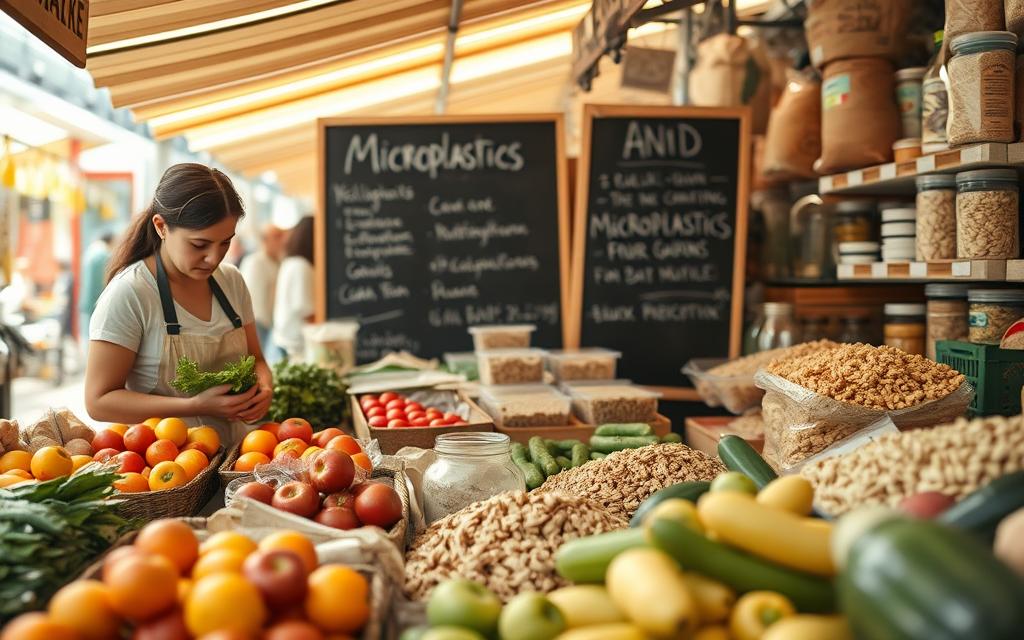
Safe Food Preparation Techniques to Minimize Plastic Contamination
How you cook food matters too. Don’t heat food in plastic because it can leak into your food. Use glass or ceramic containers instead.
Use stainless steel or wood utensils and tools. They don’t shed microplastics like plastic does. Paying attention to these details helps a lot.
Choosing Foods Less Likely to Contain Microplastics
Some foods have more microplastics than others. Seafood, like shellfish, often has a lot. Knowing where your food comes from helps.
Go for locally sourced produce when you can. Organic farming is better for the environment. It might mean less microplastics in your food.
How To Avoid Microplastics in Clothing: Wardrobe Choices for Reduced Exposure
Your clothes can affect how much microplastics you get. The fabrics you wear every day can add to pollution. But, you can choose better to lower your exposure.
The Problem with Synthetic Textiles
Clothes made from polyester and nylon are everywhere today. But, they have a big problem. Washing them lets out tiny plastics into our water.
This adds to the huge plastic pollution issue. It’s key to know what’s in your clothes. Synthetic textiles harm the planet and might hurt your health too.
Building a Sustainable Wardrobe with Natural Fibers
Switching to natural fibers helps cut down on microplastics. Fabrics like cotton, wool, and hemp are good for the earth. They break down easily, making your clothes less harmful.
When you buy clothes, choose natural ones. You’ll avoid microplastics and support sustainable fashion.
Choosing wisely for your wardrobe is good for you and the planet. It helps fight microplastic pollution.
Conclusion: Your Path to a Healthier, Microplastic-Reduced Lifestyle
You’ve started by learning how to avoid microplastics in your daily life. By using the tips from this article, you can cut down on microplastic exposure. This helps you live a healthier life.
This journey means making smart choices. For example, filter your water and pick natural fiber clothes. Also, use less single-use plastics and eat smart.
Choosing a microplastic-reduced lifestyle helps you and the planet. You’re part of a big effort to clean our environment. Every small change you make helps a lot.
By reducing microplastic exposure, you’re taking care of your health. Start with small steps today. Soon, you’ll see how these changes make a big difference.
Resource: How to Detox from Microplastics: Your Best 2025 Guide
Resource: Washington University Article

